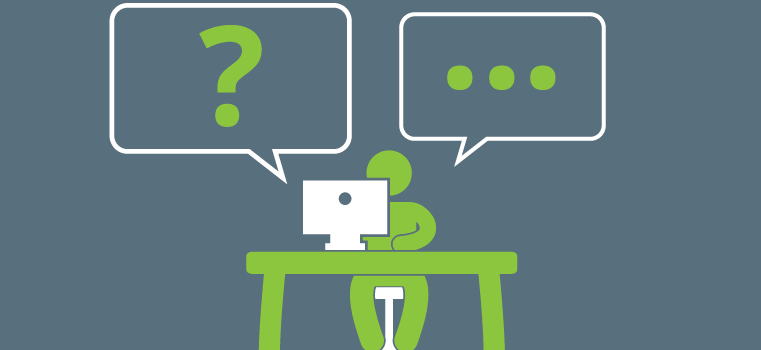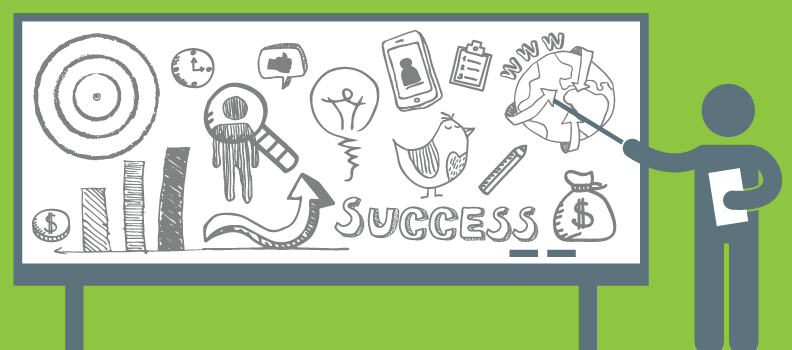The Chat Shop helps engage website visitors who aren’t quite ready to make a purchase on their own. What are some signs you look for to alert you to their hesitation?
We’re big believers in creating interactions at the right time, with the right message. Rather than using blanket invites that are highly generic, we target based on behaviour. Why? Because people are more likely to speak to you if they don’t think you’re just another spammy message.
There are a few pieces in this puzzle.
- Understanding the customer’s needs. If we’re there to bring our sales magic, we’ll be honing in on product/service pages, pricing pages, demo request pages and so on. We want to speak to those customers who are interested in what our customer’s are selling, to separate some of the sheat from the chaff.
- Look at the data. Analytics work is a big part of setting up an effective strategy. We’ll focus in on the flow to the key pages, honing in on things like referral source, pages in the funnel, top entry and exit pages and begin to build a picture of how those pages perform. Do they have a high bounce rate? A long average time on page? We’re there to catch more sales, not interrupt people who are going to do it anyway.
- Segment Your Audience. Let’s say you’re spending thousands on PPC each month, we want to maximise those clicks to get you a better ROI on that spend. So we’ll dig into PPC as a source and split out by things like new vs returning, geography and device type.
- Onsite behaviour signals. For example, if there is an order process of page 1, page 2, page 3, we’ll target anyone who breaks that sequence. We also have custom tools, like our exit intent which tracks the movement customers make when going to close the site. Just before they leave, we’re able to reach out to them and see if we can change that lost visitor to a lead or sale.
All of the above just gets us the rules, the bit that tells us who’s hesitating. We then pair that with awesome copy that speaks to their journey. If they’re on the pricing page, we’ll talk about pricing in the invite. If they’ve come from Facebook, we might reference that and so on. It means that not only are they getting shown an invite at a time that’s right for them, the invite speaks to their need and journey. It’s one of the reasons we speak to 300% more people than the industry average.
Of course, the last bit is optimizing it. Once live, those invites will give us data – how many times people have been shown them, accepted them and converted. In addition, we track down to a customer and agent level how they’re performing, delivering chat conversion coaching modules to improve their conversion rate. We can use that to further tweak and refine over tim, helping us to deliver better results for our customers and maximise their budget.
What are some techniques that you use to help customers and clients feel more comfortable with making a purchase?
It can be a challenge to put people at ease in a sales setting, especially when you only have typed text as your weapon! This is why we put such a big focus on recruitment and training. To help someone feel comfortable, you have to connect them to someone who’s able to relate to them. It’s one of the reasons we operate onshore, here in the UK and in the USA. By using local language speakers, our team can pick up on the nuances in the chat, to help build a relationship.
A huge amount of our training is based around engagement. It’s this engagement that helps us really connect with customers and put them at ease. We use techniques such as questioning flows, so the chat agent is driving the conversation meaning the customer doesn’t have to flounder around trying to figure out what they need to ask to know what they feel they need to know.
Other techniques include commenting on things that aren’t directly related to the inquiry, for example, “I’m looking at getting this before my wedding this year” – rather than just move to the next question, our team are trained to engage as a person, so they’d say something like “You’re getting married, congratulations, you must be really excited for the big day! Let’s make sure we get the right fit for your special day.” Customers don’t then feel they’re being ignored or moved through some cookie cutter process, they feel individual and special. Knowing we care helps relax the customer and engenders trust between them and the agent.
As we’re representing our customer’s businesses, we also push all our service levels as far as they’ll go. Our team currently maintain a 98% customer satisfaction rating – quality service is a very good tool when it comes to instilling confidence and putting visitors at ease.
One of the benefits of live chat is the immediate, real-time interaction. How can live chat be more effective for sales than email or social media?
I think one of the big challenges for businesses is the mix of channels. Chat is a fantastic tool when done well and more companies should definitely embrace it, but channels like email and social obviously need to fit into the mix. The key is how effective chat is at converting visitors onsite, which is a gap for social and email. The use of email and social to get people to the site, with chat as a conversion tool is a powerful one.
Where I see chat having the upper hand is you’re able to engage when the customer is engaged – right when they’re on your website. That’s something email and social can never do, both occur when the customer isn’t actively engaged with your product or service, but in their inbox or feed.
Statistically, chat also performs very well vs email for example. Email might have open rates of 23% when well optimised, with a CTR in the 2% – 3% range, and that’s normally just getting people back to the site rather than creating a conversion. Industry average chat engagement sits around 1.7%, but we’ve optimised that to hit 5% consistently. Of that, you’d expect 1 in 3 chats to result in a lead or a sale, so when you compare channel performance, chat is a much more effective conversion channel.
The Chat Shop increases sales leads by up to 50%. Why is live chat so effective in sourcing real sales leads?
Businesses trying to generate additional sales leads face a real seesaw trade off. If you want a higher quantity of leads, you normally have to sacrifice some quality. If you want real quality leads, you’ll have to get comfortable have a lower quantity. Chat is so effective at lead generation as it breaks this paradigm.
With effective targeting, you can engage with visitors who otherwise would just disappear into the ether. Visitors who aren’t convinced to take the next step on their own work well with chat, as it feels non committal. Unlike a phone call, where you think you’ll be thrown into a sales pitch, visitors are willing to engage earlier on. Using a well trained chat sales team means you can take this earlier touch point and use it to get them further down the journey. As a result, you have the same traffic, but a higher quantity of leads.
The real beauty of chat is that it drives qualified leads. Most leads are qualified by forms, but these are broken – increasing fields from 3 to 4 decreases conversion by 50%, so you have to trade quality if you want to boost quantity. On top of that, most forms then need to be reviewed by a real person to figure out whether they’re worth a call back. That all means time and yep, time means money.
In a chat, the prospect is in a free flowing conversation, so it feels natural when our team ask them key qualifying questions, as it’s part of us helping them find that right product or service. Prospects in a chat have opted into that to find out more information, so we position these questions as a tool for us to make the best recommendation. By asking these questions, we can make sure the lead is in fact qualified, but also provide our customers sales team with such a rich data source.
As we’re able to offer customers an increased quantity of leads and those leads have been through a full conversation designed to qualify them, you end up delivering additional qualified leads who’ve engaged with your business, are excited about it and waiting to hear from you. It’s a powerful mix for lead generation.
You wrote a post called “Enable More Sales Leads With Targeted Live Chat” where you talk about needing a dedicated strategy for ultimate success. What might a live chat strategy look like? Why is it so important to have a strategy before launching a live chat service?
As with any tool or channel or approach, strategy is a key predicate for success. So many businesses we speak to have just slapped chat on their site without thinking about how it fits in their customer’s journey, the resource they have behind it, the engagement approach and even what MI reporting they need to track and measure. It’s a real waste as you’ve got resource sitting there with no clear direction and without the skills needed to succeed. On top of that, the service experience is likely to be very average, so no strategy normally means no happy users.
If you remember nothing else from this article, please remember this: the success or failure of a live chat programme will not be down to the technology you’re using. Don’t start by looking at technology, start with people and process.
A great live chat strategy has a number of moving pieces, but one that answers the following questions will get you on the right track:
People:
- What skills do we want our chat team to have?
- What are their core objectives for chat?
- How is their time managed between phone / email and chat?
- What approach do we want them to take with customers over chat?
- What training are we providing to enable them to succeed on chat?
- What measurements are we putting in place to monitor and develop our people?
Processes:
- What are our chat engagement objectives?
- Do we have a targeting approach that achieves the above?
- Do we understand the segments of users we’re looking to access?
- What measurements are we using to define success for chat?
- What optimisation strategies are we employing?
- What in chat processes are we utilising for sales enquiries vs. support?
- Are we generating opportunities for upsell / cross sell?
Technology:
- What functional requirements do we have in order to achieve our goals for chat?
- Does the reporting allow us to monitor the key metrics we’re tracking?
- Is the system functional for agents encouraging the application of best practice?
- What engagement tools do we require to successfully execute our strategy?
You’ve talked about live chat’s effectiveness in creating a high quality website experience, and why that’s important. How can live chat help enhance a user’s experience? How can that lead to real sales?
At the heart of all marketing automation, sales technologies, web 2.0 and whatever else, we’re all people. I think can forget that with all these cool bits of tech that help us solving problems. At The Chat Shop, we believe in the power of conversation. We believe that if you can provide visitors with a quality conversation with another awesome person at a click, good things happen.
Chat helps enhance a user experience as whatever the issue, they can just talk to us about it. They don’t have to jump through hoops, go through a 10 step phone menu or fire off an email into the night and wonder when it’ll return – they just click and boom. It’s simple, it’s fast, and when done well, it gets the customer what they need.
Unlike rules or automation, we can help someone based on what they’re looking to achieve, as it’s a conversation. That personal touch can get lost in today’s digital world, so bringing that back makes a big difference to the user’s experience.
These conversations lead to real sales when the approach used is directed to that goal. Our team are trained to ‘move the conversation forwards’ meaning they’ll ask the visitor questions to qualify them and to find out more about their needs.
Through this process, the visitor can clarify key points, get answers to key questions but all the while we’re finding out more about their needs and challenges to help match them to a product or service our customer sells. This structure of conversation is really effective at delivering leads and sales as it works through the customer’s real problems, covers their objections and finds out more about their need to better contextualize how that product / service would solve it.
The Chat Shop helps increase real leads by 30 – 50% from existing website traffic. How is live chat more effective than more passive lead generation techniques, like pop-up forms?
In my experience the segmentation you can achieve with chat is much more specific. We talked earlier about some of the techniques we use and that’s a long way from a scroll-based form pop-up. As we’re able to time that interaction more specifically, we increase relevance with the right visitors.
The other area comes back to the quality of that lead. A pop-up form is great for basic list building, but you’re inevitably going to get a very mixed bag and need to run them through a number of funnels to qualify them or get them to a stage where they’re ready to engage sales.
Forms are also pretty dull. For a prospect, it’s a one way street – you want my details so I can get this offer. In chat, the customer can ask whatever they want to, meaning the value exchange is stacked in their favor, it’s then up to the agent to convert that interest. We also take them through a process that achieves data capture, but adds that qualification edge, warming them up for sales and filtering out those who are too early to buy.
For me the big differentiator is the experience. Do you remember the last time amazing pop-up form you saw? No, me neither. But I do remember the last time I had an awesome experience with a brand. If you can deliver that standout experience pre-sale, it’s a big differentiator for your lead generation efforts.
Even though live chat can increase leads with the same amount of web traffic, how might it might be used in conjunction with an inbound marketing strategy, to get more views AND more leads?
Live chat is dependent on traffic, so inbound is definitely a key prerequisite of live chat being successful. There have to be people on the site to talk to before chat can work it’s magic.
One of the cooler integrations that isn’t often used is combining chat in CTA’s that are geared to get views. For example, you could have chat as part of your social CTA so when the customer clicks through, they get to the offer and chat is open – ready to engage.
You can also leverage chat insights to feed your inbound strategy. If everyone and their dog is hopping onto chat to see how they can improve their PPC marketing, then a content drive around PPC could be a great move as it’s an indicator they’re struggling to find what they’re looking for.
Even though a dedicated live chat on a website is hugely effective, can you recommend some ways that social media might be used like a live chat to also increase legitimate sales leads?
There are a few things I think work well in social media. Hosting Twitter chats is a common strategy, where you gather experts or people interested in a field or topic and run through question sets, using the chat # to moderate and respond.
Equally, Twitter can offer the potential to seek out prospects facing your challenge or issue through keyword search and hashtags. Engaging with them won’t be as real-time as a chat, but as a social channel I think it has the greatest similarities in terms of style and feel.
The growth in Facebook messenger and also Whatsapp are other underutilised social channels at the moment. Both offer brands the chance to connect with potential leads using tools they look at everyday. I’d advise having a solid understanding of how you see the channel integrating in your overall strategy and getting the right people to connect with on the other end.
Live chat is proving to be invaluable for helping a company stand out from their competition, but time honored Internet marketing techniques like email lists are still a necessary part of every marketing strategy. How might a traditional Internet marketing campaign, using sales funnels, landing pages, and premium incentives, be used in conjunction with live chat to create a next-level marketing campaign?
You’re right, live chat isn’t a solution to everything, but I think that’s the case with almost every channel in marketing right now. Great marketing today means using a combination of channels, used coherently to create results.
If we looked at a live chat enhanced marketing approach, it would be about involving chat as a conversion step within the activity. For example, if you’re running a funnel driving webinar sign ups, chat could be on that sign up page to drive additional conversions. Equally you might choose to use chat as a tool to engage hot leads in the funnel.
Another effective-use case is using targeted chat based on the user not taking the next action in the funnel. Say they’ve been driven to an upsell, but don’t opt in before heading to checkout, you could only engage that subset of visitors with the express intention of helping them understand the value of that upsell to their business, increasing AOV.
Any data that you’re able to track in your CRM can be pulled back into chat, so anytime you have an awareness of what behaviour leads to what desired next action and can identify abnormalities in that journey, you can target them with chat. I think by understanding that as a base premise, you can start to open up a world of possibilities to integrate it as a channel in the overall marketing mix.
Want to learn more ways to get real sales leads? Contact us today!






